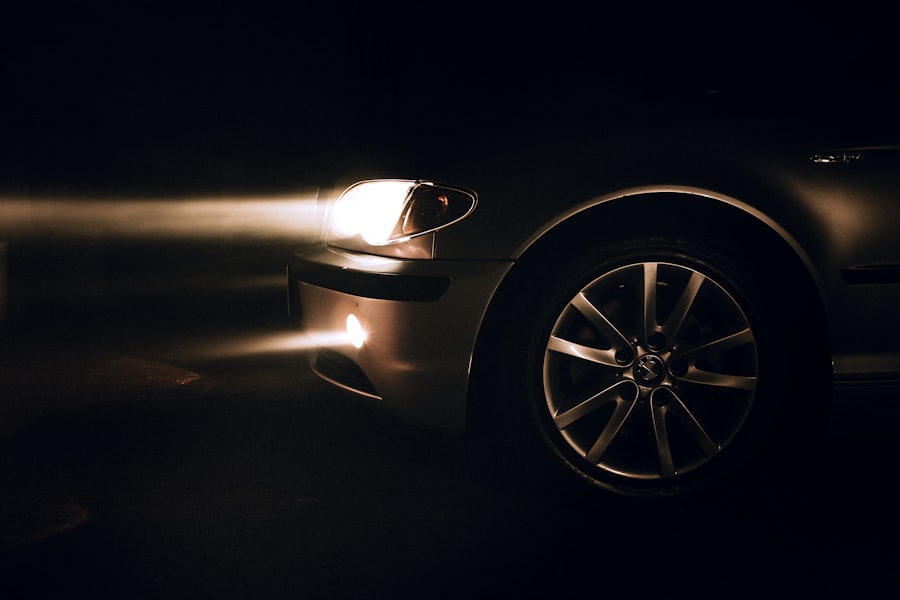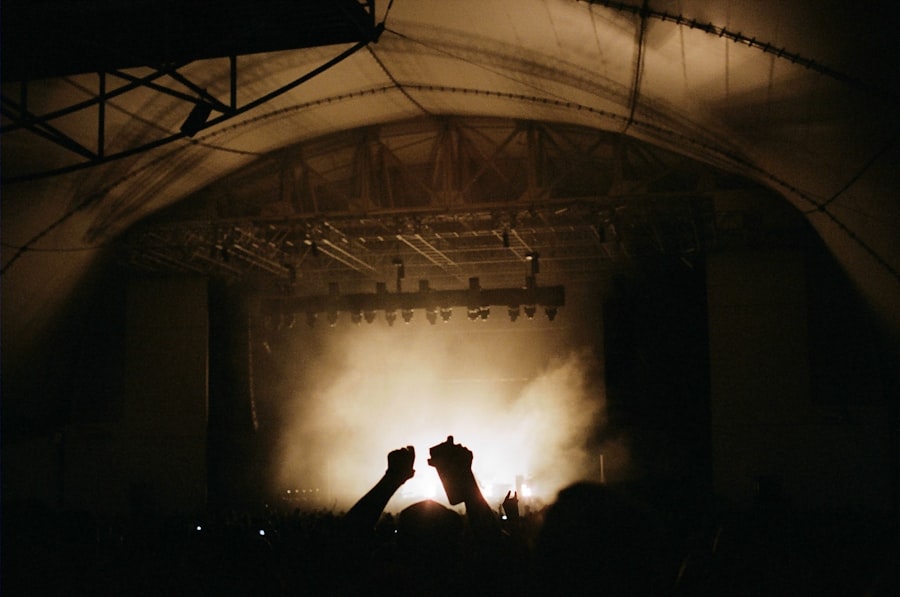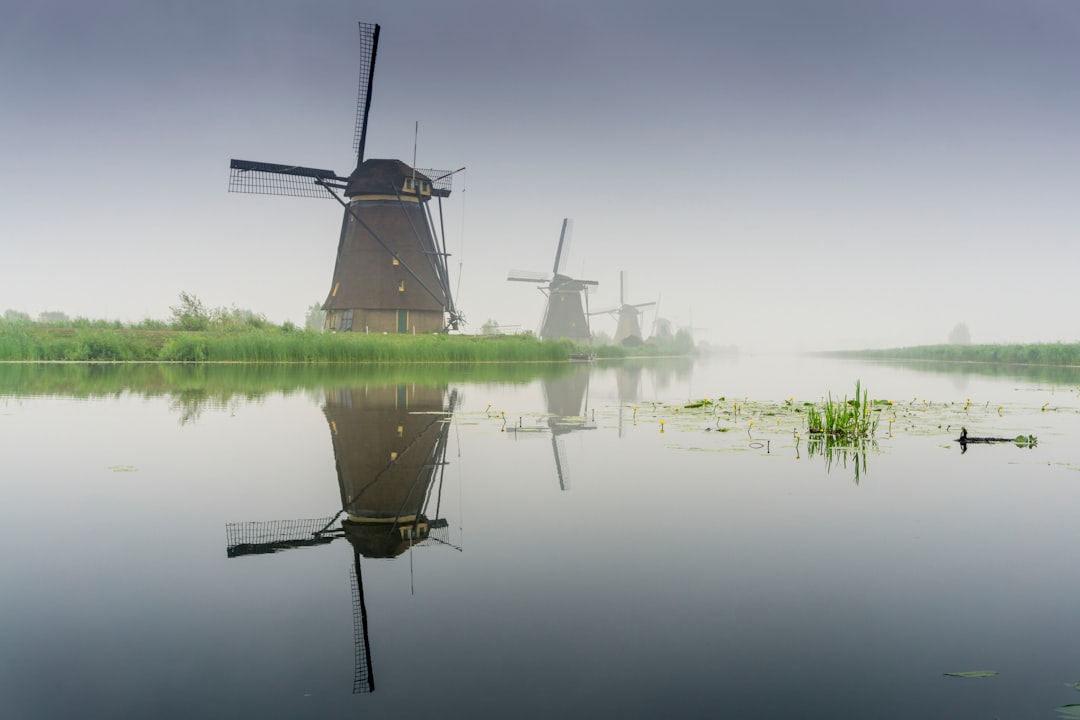Fear is a complex emotion that can elicit a range of responses, from exhilaration to sheer terror. As you delve into the psychology of fear, it becomes clear that understanding your audience is paramount. Each individual has unique triggers that can evoke fear, influenced by personal experiences, cultural backgrounds, and even biological predispositions.
For some, the fear of the dark or confined spaces may be overwhelming, while others might find themselves more frightened by the supernatural or the unknown. By recognizing these diverse fears, you can tailor your haunted house experience to resonate with a broader audience, ensuring that everyone leaves with a sense of thrill and excitement. Moreover, fear can be a powerful tool for connection.
When you experience fear in a controlled environment, such as a haunted house, it often leads to shared experiences that can strengthen bonds among friends and family. This communal aspect of fear can enhance the overall experience, making it more memorable. As you design your haunted house, consider how you can create moments that encourage group reactions—whether through jump scares or suspenseful build-ups.
By tapping into the psychological aspects of fear, you can craft an experience that not only terrifies but also unites.
Key Takeaways
- Understanding the psychology of fear is crucial for creating a successful haunted house experience.
- The layout and atmosphere of a haunted house play a significant role in immersing the audience in a terrifying environment.
- Sound and lighting are essential tools for enhancing the overall experience and creating a sense of unease.
- Creating terrifying characters through makeup and costumes is key to eliciting fear in the audience.
- Incorporating technology such as animatronics and visual effects can take the haunted house experience to the next level.
Designing the Perfect Haunted House: Layout and Atmosphere
The layout of your haunted house is crucial in shaping the overall experience. As you plan the design, think about how the flow of the space can guide your audience through a journey of fear. A well-structured layout can create tension and anticipation, leading visitors through a series of carefully curated scares.
Consider incorporating winding paths, unexpected turns, and hidden rooms to keep your audience on their toes. The element of surprise is key; when visitors are unsure of what lies around the next corner, their anxiety heightens, making each scare more impactful. Atmosphere plays an equally important role in setting the tone for your haunted house.
The right combination of colors, textures, and props can transport your audience into a world of horror. Dark, moody lighting can create shadows that play tricks on the mind, while eerie soundscapes can enhance the feeling of dread. As you design each room, think about how to evoke specific emotions through visual elements.
For instance, a room filled with cobwebs and flickering lights can instill a sense of decay and neglect, while a space adorned with grotesque imagery can provoke feelings of disgust. By meticulously crafting both layout and atmosphere, you can create an immersive experience that lingers long after visitors leave.
Utilizing Sound and Lighting to Enhance the Experience

Sound and lighting are two powerful tools that can significantly enhance the haunted house experience. As you consider how to incorporate these elements, think about how they can work together to create an atmosphere of suspense and fear. The use of sound effects—such as creaking doors, distant screams, or unsettling whispers—can heighten tension and prepare your audience for what’s to come.
Sound effects Layering these sounds creates an immersive auditory landscape that draws visitors deeper into the experience. You might even consider using directional speakers to create soundscapes that seem to come from specific locations within the haunted house, adding an element of realism that can be truly chilling. Lighting is equally essential in crafting the right mood.
Dim lighting can obscure details and create an air of mystery, while sudden flashes or strobe lights can startle visitors at just the right moment. You might experiment with colored lights to evoke different emotions; for example, red lighting can suggest danger or bloodshed, while blue tones might create a cold, eerie atmosphere. Additionally, using shadows strategically can enhance the feeling of unease—what lurks just beyond the reach of light?
By thoughtfully combining sound and lighting elements, you can amplify the emotional impact of each scare and keep your audience engaged throughout their journey.
The Art of Makeup and Costumes: Creating Terrifying Characters
Makeup and costumes are vital components in bringing your haunted house characters to life. The artistry involved in creating terrifying looks can elevate the entire experience for your audience. As you design your characters, consider how makeup techniques can transform ordinary individuals into nightmarish figures.
Techniques such as aging makeup, prosthetics, and special effects can create grotesque features that leave a lasting impression. The more realistic and unsettling the characters appear, the more effectively they will elicit fear from your visitors. Costumes also play a significant role in character development.
A well-designed costume not only enhances the visual impact but also helps actors embody their roles more fully. When selecting costumes, think about how they reflect the backstory of each character—what motivates them? What horrors have they experienced?
This depth adds layers to your haunted house narrative and allows visitors to connect with the characters on a more emotional level. By investing time and creativity into both makeup and costumes, you can create unforgettable characters that haunt your audience long after they’ve left.
Incorporating Technology: Animatronics and Visual Effects
In today’s world, technology offers exciting opportunities to elevate the haunted house experience through animatronics and visual effects. These innovations can create lifelike movements and interactions that captivate your audience’s attention. Imagine a scene where a lifelike animatronic figure suddenly lunges at visitors or a ghostly apparition appears to float through walls—these moments can leave guests breathless with fear and wonder.
As you explore technological options, consider how animatronics can enhance storytelling within your haunted house, providing dynamic interactions that traditional static props cannot achieve. Visual effects also play a crucial role in creating an immersive environment. Projection mapping can transform ordinary surfaces into eerie landscapes or ghostly figures that seem to come alive before your eyes.
This technology allows for seamless transitions between scenes and adds an element of surprise that keeps visitors engaged. Additionally, incorporating augmented reality elements could provide an interactive layer where guests use their smartphones to uncover hidden scares or clues throughout their journey. By embracing technology in your haunted house design, you can push the boundaries of traditional horror experiences and create something truly unforgettable.
Interactive Elements: Engaging the Audience

Engagement is key when it comes to creating a memorable haunted house experience. By incorporating interactive elements, you invite your audience to become active participants rather than passive observers. This could take many forms—perhaps guests must solve puzzles to escape a room or navigate through challenges that test their bravery.
These interactive components not only heighten the sense of immersion but also encourage teamwork among visitors as they navigate through fear together. Consider also how you might use storytelling to enhance interactivity. By weaving narratives into each room or scene, you allow guests to feel invested in the outcome of their journey.
For instance, they might encounter characters who provide clues or warnings about what lies ahead, creating a sense of urgency and purpose as they move through the haunted house. This level of engagement transforms a simple walk-through into an adventure filled with suspense and excitement. By prioritizing interactivity in your design, you ensure that every visitor leaves with a unique experience tailored to their choices.
Safety Measures: Ensuring a Thrilling yet Secure Environment
While creating an exhilarating haunted house experience is essential, ensuring safety should always be a top priority. As thrilling as it may be to scare your audience, it’s crucial to implement measures that protect them from harm while still delivering heart-pounding thrills. Begin by conducting thorough risk assessments of your layout—identify potential hazards such as trip hazards or areas where guests may become trapped or disoriented.
Clear pathways and well-marked exits are essential for maintaining safety without detracting from the immersive experience. Additionally, consider training staff members on emergency protocols and first aid procedures so they are prepared for any situation that may arise during operation hours. Having designated staff members stationed throughout the haunted house can help monitor guest behavior and ensure everyone is following safety guidelines while still enjoying themselves.
By prioritizing safety measures alongside thrilling scares, you create an environment where guests feel secure enough to fully immerse themselves in the experience without fear of injury.
The Future of Haunted Houses: Innovations and Trends in Special Effects
As technology continues to evolve, so too does the world of haunted houses. The future promises exciting innovations that will redefine how audiences experience fear and horror. One emerging trend is the integration of virtual reality (VR) experiences within haunted houses—allowing guests to step into entirely new worlds filled with unimaginable horrors.
This technology offers limitless possibilities for storytelling and immersion; imagine being chased by a monster in a VR environment while still physically navigating through a real-world haunted house. Another trend gaining traction is the use of artificial intelligence (AI) to create adaptive experiences tailored to individual guests’ fears and preferences. By analyzing visitor responses in real-time, AI could adjust scares or storylines based on their reactions—ensuring no two experiences are ever alike.
This level of personalization could revolutionize how haunted houses engage with their audiences, making each visit uniquely terrifying. In conclusion, as you embark on creating or enhancing your haunted house experience, remember that understanding psychology plays a crucial role in designing an engaging atmosphere filled with fear-inducing elements. From layout and atmosphere to sound design and character creation—each aspect contributes to crafting an unforgettable journey into terror for your audience.
Embrace technology’s potential while prioritizing safety measures so guests can fully immerse themselves in this thrilling adventure without worry. The future holds endless possibilities for innovation within this realm; by staying ahead of trends and continuously evolving your approach, you’ll ensure that your haunted house remains at the forefront of fear-filled entertainment for years to come.
If you’re interested in exploring more haunted house attractions, you should check out The Best Halloween Haunted House Attractions in the Midwest. This article highlights some of the top haunted houses in the Midwest region, showcasing the creativity and special effects that make these attractions truly terrifying. Whether you’re in Illinois or looking to travel to Germany for some spooky fun, this list has something for every horror enthusiast.
FAQs
What are special effects in haunted houses?
Special effects in haunted houses are techniques and tools used to create a spooky and immersive experience for visitors. These effects can include lighting, sound, fog machines, animatronics, and other props to create a scary atmosphere.
What are some common special effects used in haunted houses?
Some common special effects used in haunted houses include strobe lights, black lights, projection mapping, sound effects, animatronics, fog machines, and special makeup and costumes for actors.
How do special effects enhance the experience in haunted houses?
Special effects enhance the experience in haunted houses by creating a sense of fear, suspense, and surprise for visitors. They help to create a realistic and immersive environment that adds to the overall thrill of the haunted house experience.
Are special effects in haunted houses safe for visitors?
Special effects in haunted houses are designed to be safe for visitors when used properly. Haunted house operators take precautions to ensure that special effects do not pose any physical harm to visitors.
Can special effects in haunted houses be too intense for some visitors?
Yes, special effects in haunted houses can be too intense for some visitors. It is important for haunted house operators to provide warnings and options for visitors who may be sensitive to certain effects, such as strobe lights or loud noises.

No responses yet